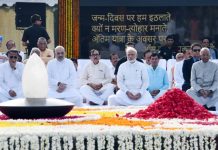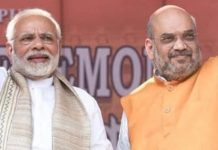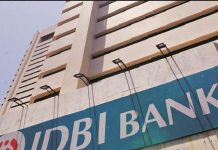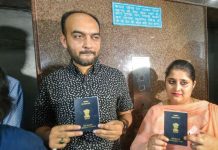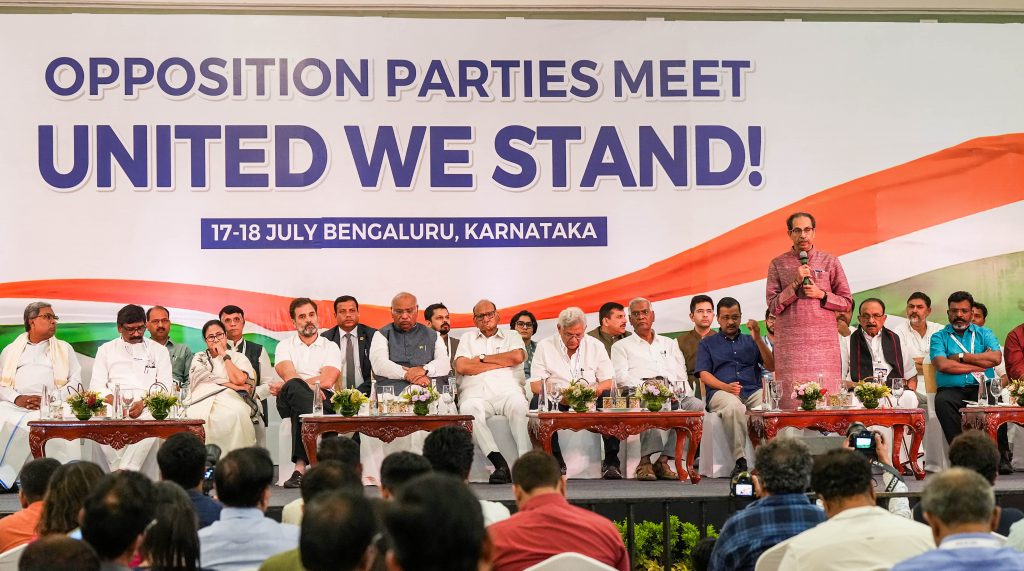
To what extent the Congress accommodates the aspirations of the 27 regional parties and how much the alliance partners remain committed to staying together will have a bearing on the success that INDIA block achieves in the 2024 General Elections. A report by Amit Agnihotri
The opposition grouping Indian National Developmental Inclusive Alliance (INDIA) is gradually taking shape to take on the BJP in the 2024 Lok Sabha elections, but the grouping faces several challenges from within.
Subsequent to the first opposition meeting in Patna, Bihar on June 23 and the second meeting in Bengaluru, Karnataka on July 18, the third meeting of the INDIA alliance took place in Mumbai on Aug 31 and Sep 1.
After the deliberations spread over two days, the leaders announced the formation of several panels to work out joint strategies for campaign, protests and communications but the real challenge would be to sort out seat sharing between the 28 constituent parties.
The most important panel is the 13-member Coordination Committee which includes KC Venugopal (Congress), Sharad Pawar (NCP), TR Baalu (DMK), Hemant Soren (JMM), Sanjay Raut (SS-UBT), Tejasvi Yadav (RJD), Abhishek Banerjee (TMC), Raghav Chaddha (AAP), Javed Ali Khan (SP), Lalan Singh (JD(U)), D Raja (CPI), Omar Abdullah (NC) and Mehbooba Mufti (PDP).
This panel would play a key role in ensuring a smooth coordination between the opposition alliance as well as between the senior leadership of the respective parties.
At the Mumbai meet, Shiv Sena (UBT) leader Aaditya Thackeray announced three big resolutions that the member parties would “contest the forthcoming Lok Sabha elections together as far as possible” and “seat-sharing arrangements in different states will be initiated immediately and concluded at the earliest in a collaborative spirit of give-and-take and that the parties would organise public rallies at the earliest in different parts of the country on issues of public concern and importance.
Besides, the parties decided to coordinate communications and media strategies and campaigns on the theme of ‘Judega Bharat, Jeetega India’ in different languages.
The opposition alliance INDIA has identified over 400 Lok Sabha seats out of the total 543 in the country where a single candidate will be fielded against the BJP nominee. The idea was first floated by Bihar chief minister Nitish Kumar, who hosted the first meeting in Patna on June 23.
“As far as seat sharing is concerned, it will be state-centric and would have to be worked out. For instance, in Maharashtra, the Congress-Shiv Sena UBT-NCP alliance is already functional. Hence, seat sharing will be no problem here. The BJP took away the MLAs of the Shiv Sena UBT and the NCP to grab power but the voters are still with Uddhav Thackeray and Sharad Pawar. Together, the MVA has around 60 percent vote share and is in a position to win over 40 of the total 48 Lok Sabha seats in the state,” said a senior Congress leader.
In UP, the alliance is trying to rope in BSP chief Mayawati also but she has refused to join hands either with the INDIA alliance or with the BJP-led NDA.
The Congress leader further said that as the INDIA alliance brings together diverse political parties, a process where the workers from different outfits can interact, share experiences and build trust, would be implemented over the coming days.
“Joint protests will have a greater impact. Yes, the workers of the parties come from different backgrounds but they can be brought together. Due processes would be followed to ensure that,” he said, adding that “a common minimum program reflecting the policy intent of the opposition would also have to be worked out to show that it had a better agenda of development for the country than the claims being made by the ruling BJP.”
However, Congress insiders agreed that working out seat sharing in states like Uttar Pradesh, West Bengal, Delhi, Punjab, Kerala and Gujarat would not be easy.
In Uttar Pradesh, the SP has an alliance with RLD and may not be willing to give too many seats to the Congress which had won just 1 seat in 2019. In West Bengal, the ruling TMC may not be willing to share seats with the Congress and the CPI-M, which lack ground support and were wiped out in the last assembly polls. Besides, the TMC and Congress-CPI-M leaders are constantly attacking each other in Bengal, something the leaders may find difficult while working out seat sharing and launching joint protests.
The same is the situation in states like Delhi, Punjab and Gujarat where the local Congress leaders don’t see eye to eye with the AAP, which has grown there by taking away grand old party’s votes.
AAP is also busy campaigning in the poll bound states like Madhya Pradesh, Chhattisgarh and Rajasthan where the Congress has a direct fight with the BJP and believes it has a better chance of defeating the saffron party.
Recently, the DMK-Congress alliance in Tamil Nadu also came under strain over the controversial remark made by a state minister Udhayanidhi Stalin over the Sanatan Dharma. The BJP slammed both DMK and the Congress over Udhayanidhi remarks against Sanatan Dharma, which were supported by chief minister K Stalin.
The Congress distanced itself from the DMK leaders over the controversy by saying it did not approve of the remarks and believed in equality of all religions. In Kerala, the Congress led UDF is pitted against the CPI-M led LDF, which is in power. Like in the case of AAP, while the central leaders of both Congress and CPI-M work together in the INDIA alliance, the respective state units regularly attack each other.
Further, the issue of the alliance’s prime ministerial face is another contentious issue the INDIA parties would have to deal with. The Congress is keen to project Rahul Gandhi saying his nationwide Bharat Jodo yatra actually led to the anti-BJP alliance INDIA and that the Congress was the largest opposition party in the grouping.
The problem is that other parties like SP, AAP, TMC, Shiv Sena, DMK and CPI-M also think that their nominee should be considered for the top post. However, for now the alliance has tried to keep the issue on the back burner as it can derail the entire opposition unity process. The grouping had repeatedly said to counter the BJP that it will choose its prime ministerial candidate after the polls and that defeating the BJP was the priority till then.
Another point of disagreement was the designing of the INDIA logo which could not be finalized at the Mumbai meet and has been deferred for the next meet likely to be held either in New Delhi or in Bhopal.
The first meeting of the INDIA coordination committee was held on Sep 13 at Sharad Pawar’s residence in New Delhi. However, the Congress and Sena leaders are doubtful over the role of the NCP chief who has been making some strange remarks over the rebellion led by his nephew Ajit Pawar, now a deputy chief minister of Maharashtra government supported by the BJP.
Pawar has been saying there is no split in the NCP and that Ajit Pawar is still part of his party. He also attended a recent gathering in Pune where PM Modi was honored by the Tilak Trust.
While the INDIA alliance claims the BJP is nervous over the opposition alliance which can defeat the saffron party in the next Lok Sabha polls, PM Modi has slammed the opposition grouping saying it was the coming together of parties that were corrupt and believed in dynasty. The Congress and Sena countered this charge by questioning the BJP move to make NCP leader Ajit Pawar a deputy chief minister days after alleging that Sharad Pawar’s party was corrupt.
Speaking at the Mumbai meet, Rahul Gandhi summed up the situation very well by acknowledging that there were differences among the partners of INDIA but the best part was that the parties were showing flexibility to work out the common goal of defeating the BJP in 2024.
To what extent the Congress accommodates the aspirations of the 27 regional parties and how much the alliance partners remain committed to staying together, will have a bearing on the success that INDIA achieves in the big electoral battle next year.







